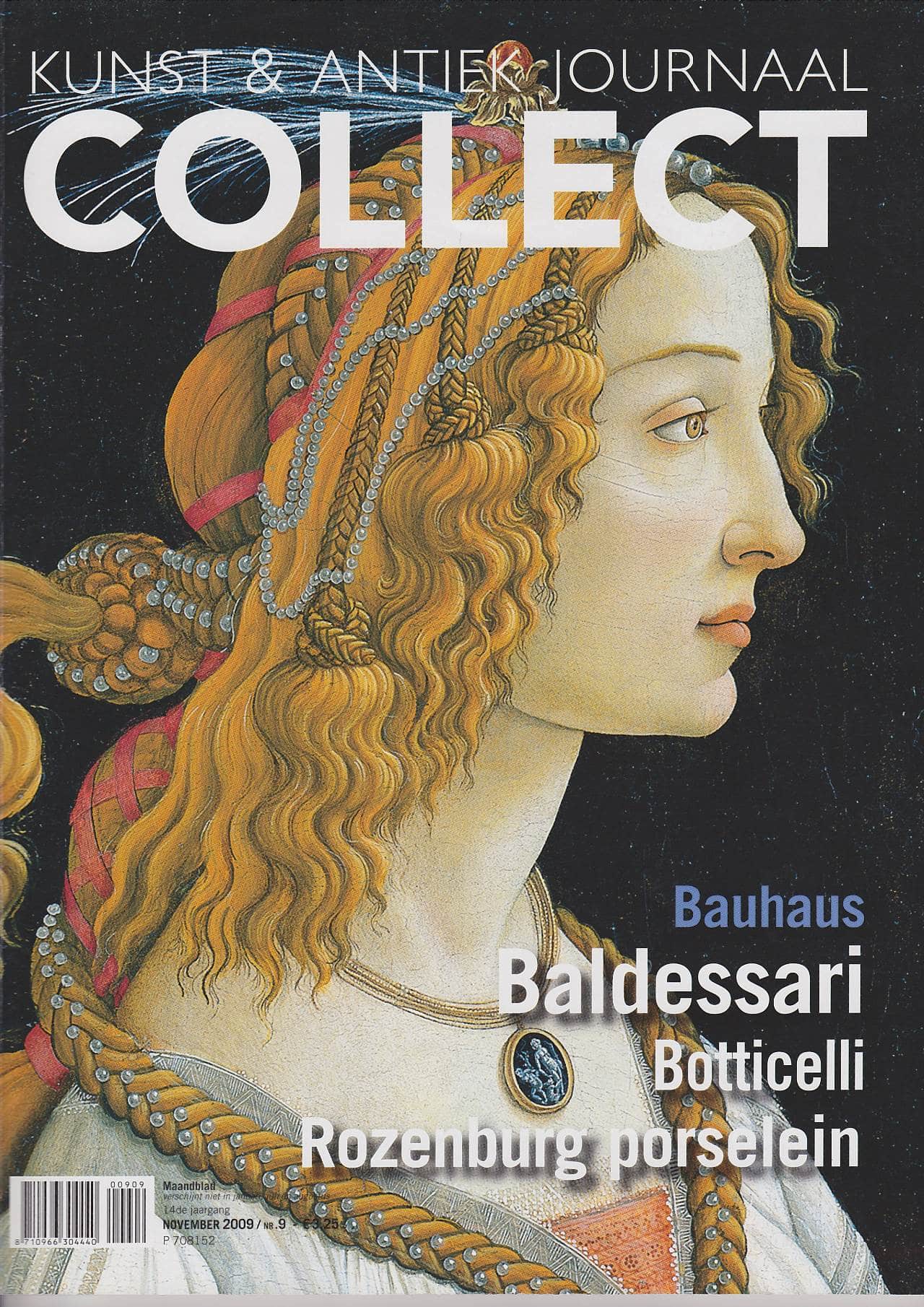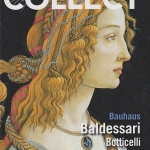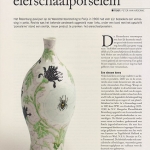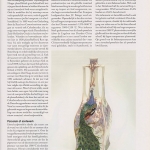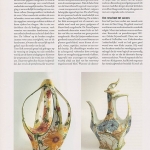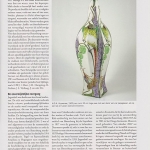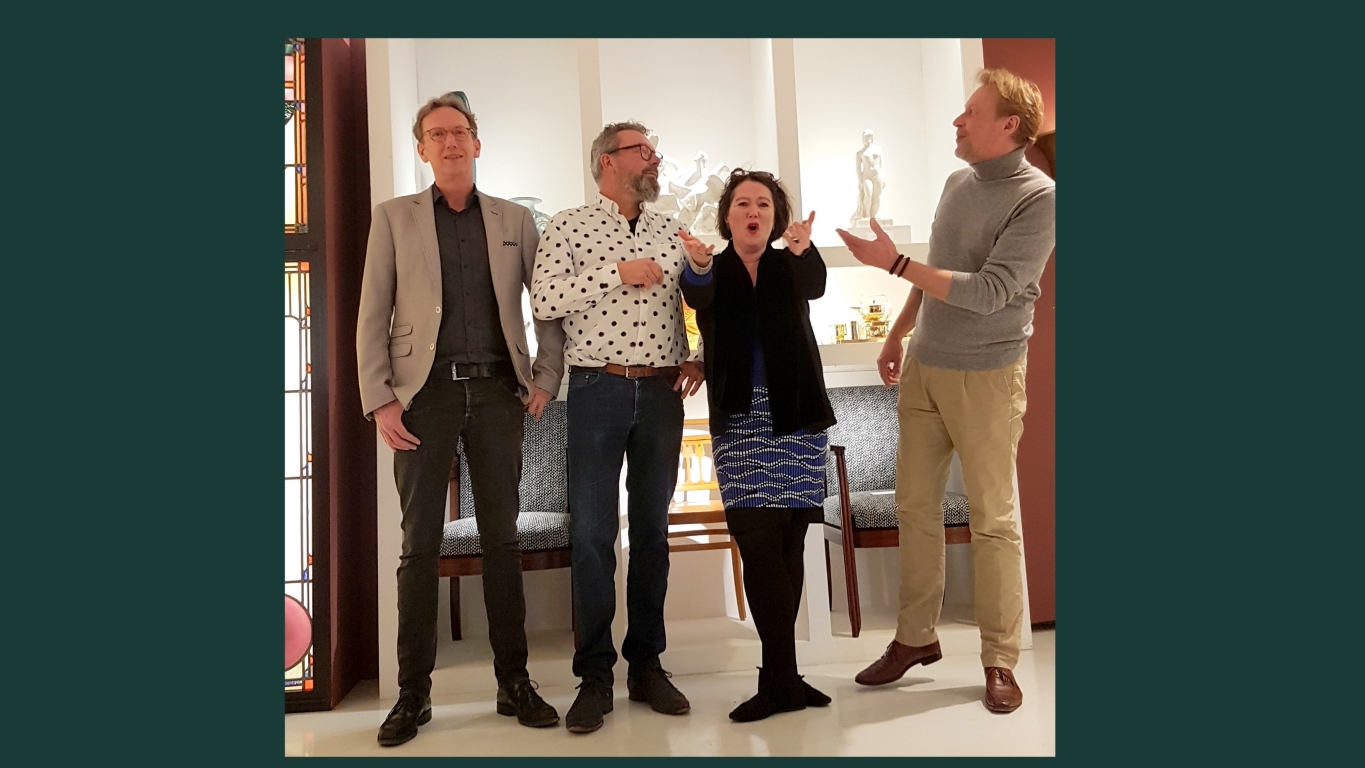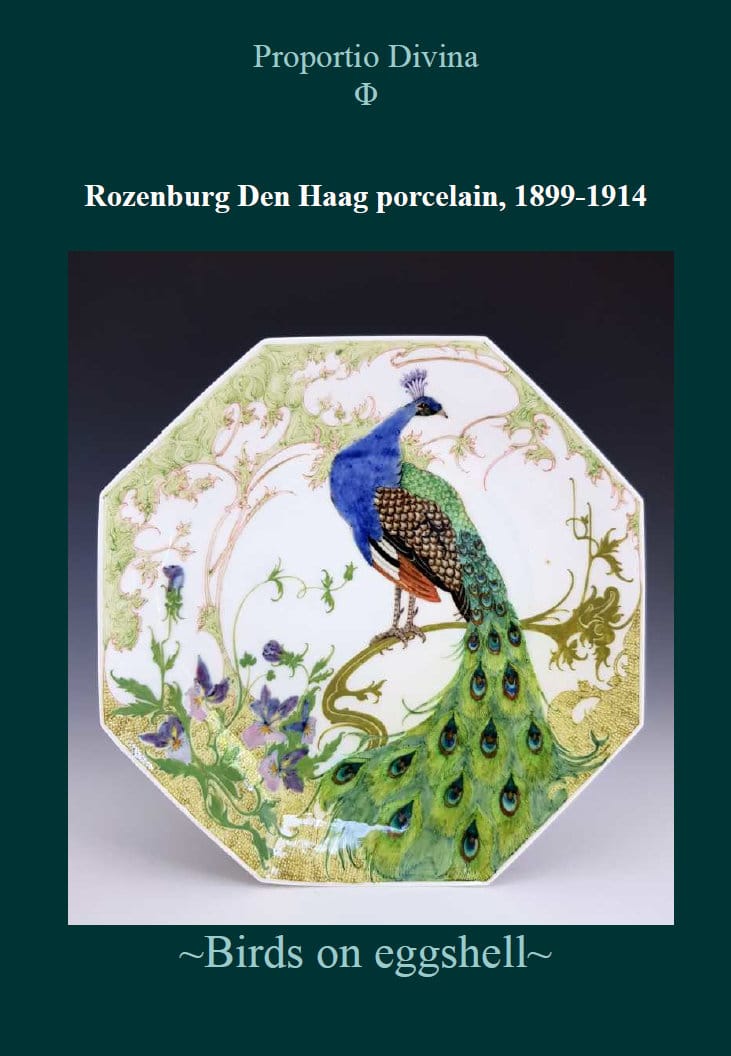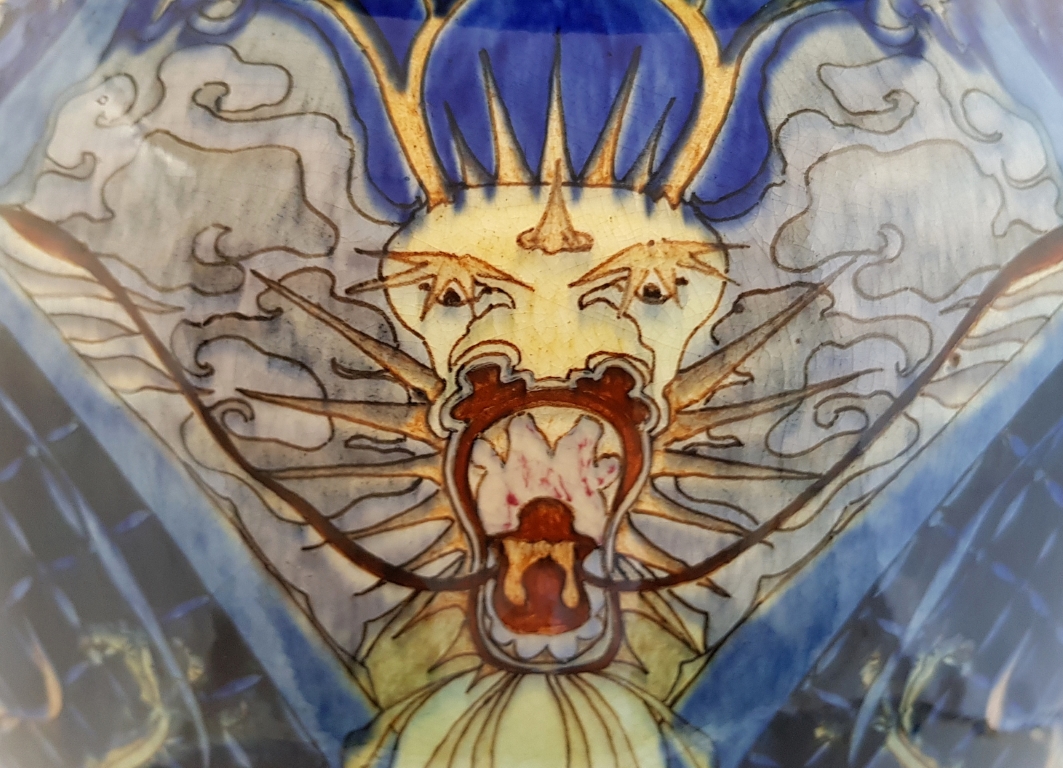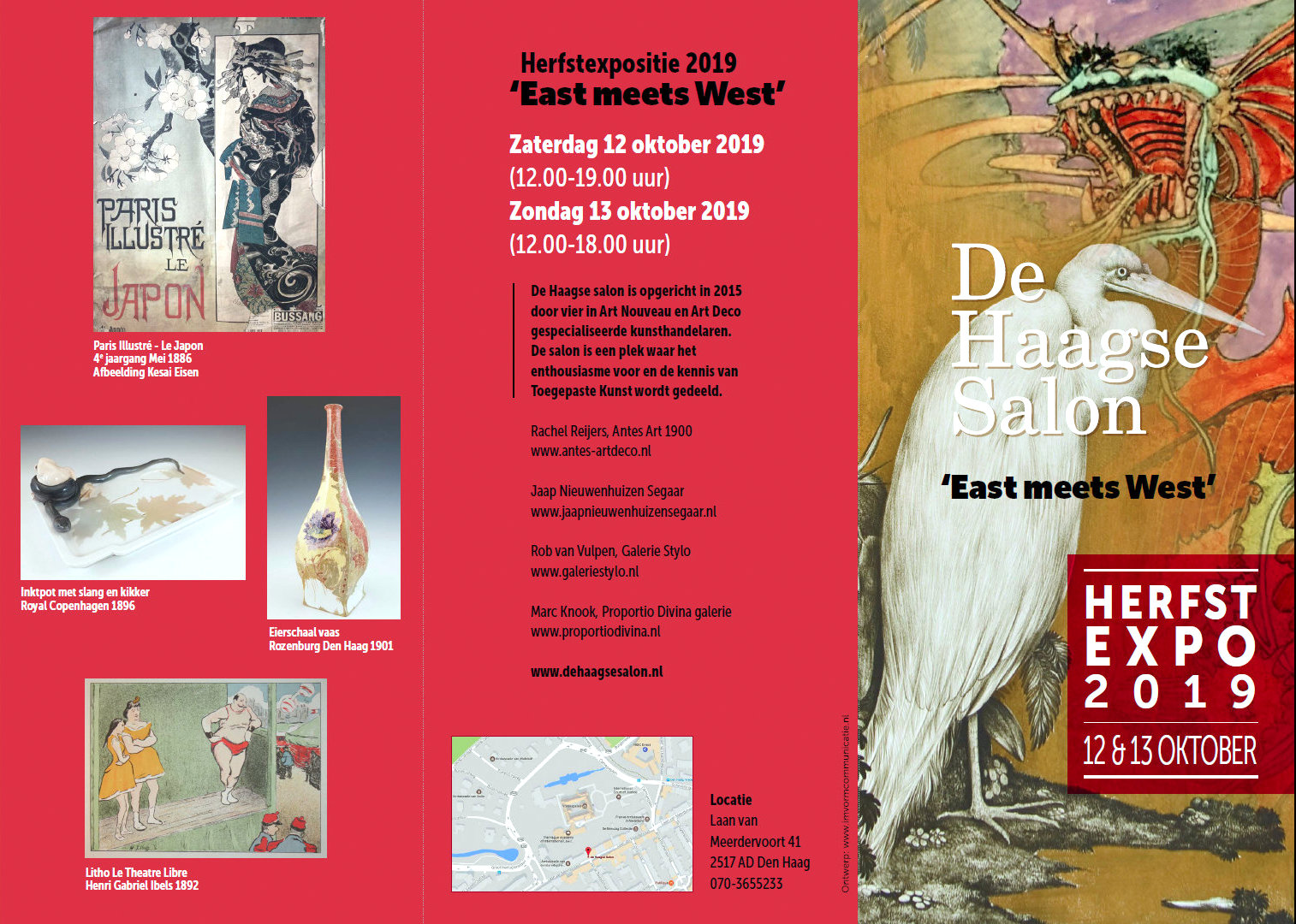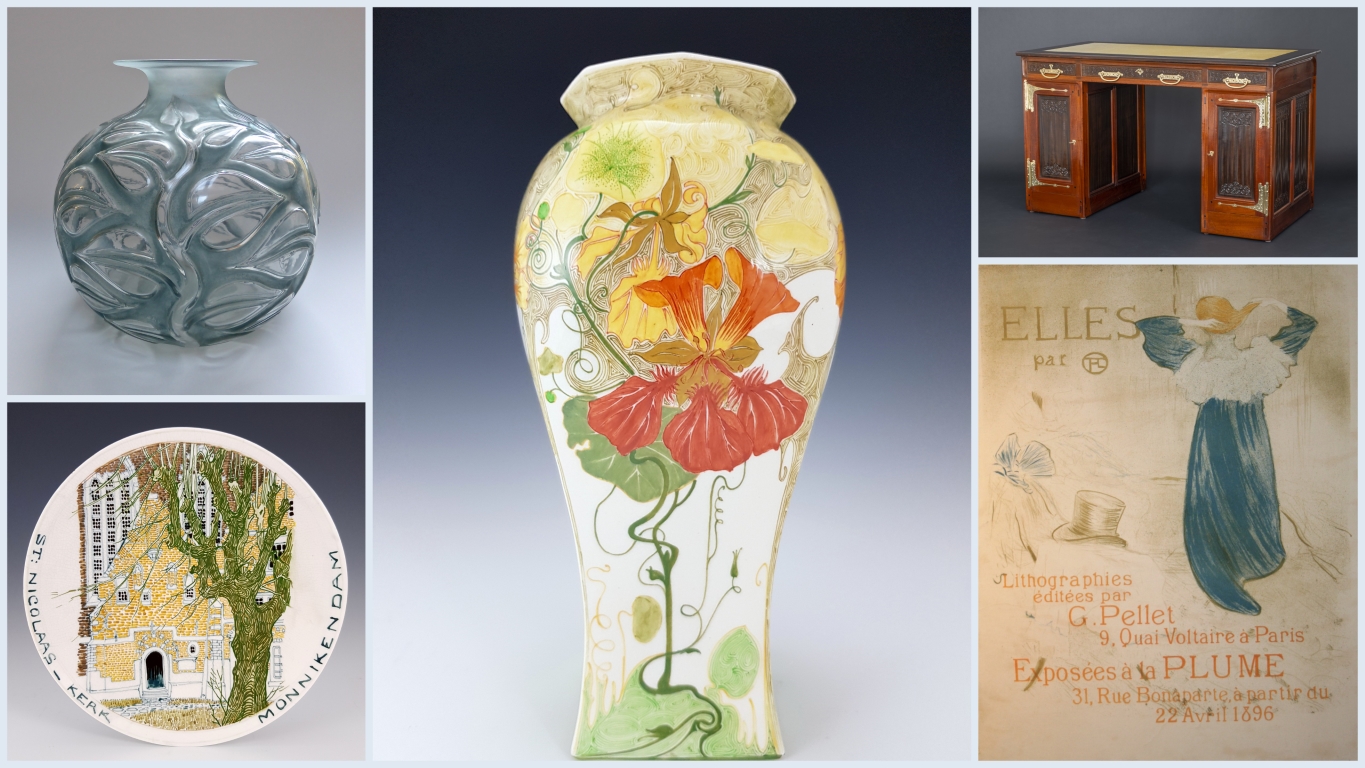An article about Rozenburg eggshell porcelain, by Peter van Ardenne in the Dutch art magazine “Collect Kunst & Antiek Journaal”. Translated from Dutch by Peter Boel.
ROZENBURG EGGSHELL PORCELAIN Text: Peter van Ardenne
The Rozenburg pavilion at the World Exhibition in Paris, 1900, had a surprise in store for its visitors. On the right the well-known pottery had been put on display, but on the left, under a sign that said ‘porcelaine’, an elegant new product was glittering: eggshell porcelain. The wafer-thin objects with their ethereal decorations made a great impression, and within a year they were in great demand. Still, in the end it wasn’t a commercial success. The purchasing costs and the breakability of the material turned out to be stumbling-blocks, and probably most services and vases chiefly served as decorative objects. This was a blessing in disguise, as it meant that a number of objects remained intact for collectors.
A new course
The Netherlands have a long tradition in earthenware and porcelain. Already in the seventeenth century, the city of Delft was famous for its pottery; in the eighteenth century, Amsterdam, The Hague, Weesp and Loosdrecht followed suit with porcelain. At the end of the nineteenth century, under the influence of Arts and Crafts and Jugendstil, interest in ceramics flourished, and countless delftware factories saw the light of day. In 1883, W.W. von Gudenberg (1855-1930) established the N.V. Haagsche Plateelfabriek Rozenburg in The Hague, a factory that produced art pottery for both decorative and everyday use. The factory made, amongst others, vases and plates, decorated with floral Jugendstil motifs, which, with their predominantly dark and subdued colours, bore resemblance to the work of Fayence-en Tegelfabriek Holland in Utrecht and Wed. N.S.A. Brantjes en Co. in Purmerend. The factory also supplied naturalistic illustrations such as large-format tile plates and tile pictures for the decoration of buildings. One year after the establishment of the factory, Th.C.A. Colenbrander (1841-1930) entered service as an ‘aesthetic leader’. This man, who is quite generally regarded as the greatest innovator in Dutch art pottery in that period, was originally an architect. He made the delftware factory in The Hague famous with his stylized decorations in bright colours, which were applied on a white or cream background. Also, the models he designed often had remarkable shapes: for instance, profiled vases and ‘mugs’ with pointed, onion-shaped or turban-shaped tops. In 1889, Von Gudenberg was fired by the board of directors. Colenbrander also left, and wandered around for a while. After working for the Plateelbakkerij Zuid-Holland in Gouda he ended up in Arnhem. Here, some of his friends and admirers established a delftware factory called Ram in 1920, where he concentrated on decorating vases with fanciful motifs in blazing colours. Six years after his resignation from Rozenburg, during which several directors had come and gone, the vacancy was filled by the appointment of J.J. Kok. This architect, born in 1861 in Rotterdam as Jurriaan Kok and called Jurriaan Jurriaan Kok from 1899 onwards, had received his education at the Polytechnische School in Delft. He formed a company with a colleague in The Hague, through whom he came into contact with Rozenburg. There he became an aesthetic advisor in 1894. In that year he already acted as a director for all practical purposes, and one year later his official appointment as general director followed. He had a clear vision of what he wanted to achieve: he wanted to return to the original aims of the delftware factory, which had petered out somewhat after Colenbrander’s departure and due to the commercialisation of the Rozenburg products. In order to achieve this goal, he left the trodden paths and started developing new models, made of new material: eggshell porcelain.
Porcelain or pottery
Eggshell porcelain is named after the skin of the shard, which is so extremely thin that it is slightly transparent. Many experts have racked their brains over the question whether the material was real porcelain. Originally it was assumed that the pigments of the decorations couldn’t withstand temperatures of over 1300°C. This led to the conclusion that the material must have been baked at lower temperatures, and could therefore not be porcelain. Porcelain – which first got its name from Marco Polo (1254-1324) – was already developed in China in 600-900 AD. The production method of this popular material had been shrouded in mystery for centuries, and Europe had to rely on import from Asia until, in the early 1700s, J.F. Böttger invented the European hard-paste porcelain. Notably, this variety was baked at much higher temperatures than the Chinese material: 1370-1460°C against 1000-1320°C. Not everyone was charmed by this hard-paste porcelain (which the English call Dresden China) and in a number of countries softer material was developed, which – after the Chinese example – was baked at lower temperatures, e.g. in Scandinavia, in France (Pâte Nouvelle) and in England (Bone China). After a few failures with Bone China, Kok started to experiment with a material that had been developed by Prof. Dr. H. Seger in Berlin. Which of the two types of porcelain clay he actually used is not entirely clear, but in the factory archives the composition was found: 19% Cornwell stone, 31,6% china clay, and 49,4% bone meal. With information from that same archive, ‘Kok’s secret’ was also unlocked. In order to better conserve the decorations, he turned the traditional process around, ordering the biscuit heating (of the bare shard) to take place at very high temperatures, up to ca. 1500°C, while the polish heating (of the glazed shard) took place at a lower temperature. Ergo, we can qualify eggshell porcelain as porcelain, on the grounds of the baking temperatures.
From misfire to result
The Rozenburg list includes slightly more than 300 models – often varieties of characteristic basic forms. The models that Kok developed were cast in one piece, since the thin material made the assembly of separate parts impossible. Obviously, in the beginning things often went wrong, and many misfires came warped out of the oven. But before the pieces could enter the oven, another problem had to be solved: some pieces already warped during the drying process. It is not unthinkable that Kok’s angular shapes, often with several handles, had not only an aesthetic, but also a technical purpose. After all, the ‘ribs’ at the corners provided additional firmness, just like the handles, although, of course, the latter followed the fashion of the day as well. Once Kok had a grip on the shaping and drying of his models, he faced the final challenge: he had to find a way to control the temperature in the ovens. For that purpose he used a tool which, just like the porcelain clay he had experimented with, had been developed by Prof. Seger. Seger cones, in various formats, warped when heated in the oven. As it was known of each format at which temperature this occurred, this way he acquired accurate information about the oven temperature. In the hellish heat of the biscuit burning, besides transparence and hardness, the objects obtained yet another quality: the shard received the non-porous skin that was necessary to hold the subtle paintings. Kok kept the pieces predominantly white or cream; only every now and then a purple, yellow-green or blue background was applied. With ultra-thin lines, flowers and plants were painted in a stylized naturalistic manner, besides animals like birds, fish, reptiles, mice and the odd mini-dragon. The illustrations were harmonized with the background by flamboyant lines and irregular planes, filled with hatchings and dots, always leaving part of the object undecorated. When the decorations had been applied, the product could be put in the oven for the second time. After a year of experimenting, the first series of eggshell porcelain was finished, just in time for the World Exhibition in Paris in 1900, where it was exhibited together with the other Rozenburg products. The new models were favourably received, and in The Hague a great effort was made to bring out a subsequent series.
From result to success
Six months later, a second series left the ovens in The Hague. The entire supply was sold out within a week, and a third series followed. But not everybody was so enthusiastic. Ceramics and porcelain expert H.E. van Gelder, for example, was an avowed devotee of Colenbrander’s ‘traditional’ working method, and he didn’t have a good word to say about Kok’s creations. In his opinion they were decadent, and Kok ignored the principle that shapes had to be simple and logical, and decorations should be in keeping with that. He did acknowledge the reputation that Kok’s work enjoyed, but still described the eggshell porcelain as ‘products of a well-nigh ridiculous pretense…’ and ‘a hoax’. Perhaps Van Gelder had a point from an art critic’s point of view. Indeed, Kok did stray far from H.P. Berlage c.s.’s beliefs, which were the fashion among art innovators. But apparently the buyers’ market held a different view. The production increased, and there followed series of vases, often with two or four ears, plates, plateaus in all sizes, and ornamental products, among which the odd candleholder, sconce, or bonbonnière. Also, great numbers of tea, coffee and chocolate services were manufactured, of which the octagonal cups became the best known. Obviously, for its decorations Rozenburg had to rely on the craftsmanship of its delftware painters. The decorations were designed by a few master painters, and drawn on the shards with pencil. Mostly, various (sometimes even five!) painters were involved in the painting of one single piece, each one of them taking care of a specific segment. Thanks to the extensive signing of the pieces with the manufacturer’s trade mark, the production year, the work order number and the painters’ signatures, the history of virtually every piece can be traced. Two important designers/painters were in service during almost Rozenburg’s entire existence: J.W. van Rossum and S. Schellink. Others contributed during shorter periods, like C.W.J. ’t Hart, J.H. Hartgring, R. Sterken, J.L. Verhoog, J. van der Vet.
The inevitable decline
Jugendstil was only short-lived. Fast-developing technology brought new productional options with it and the market was flooded with mass products that had nothing to do with the original applied art movement. Interest in the breakable and expensive eggshell porcelain (a sizeable vase cost 150 guilders in those days!) quickly waned and when economic circumstances worsened, and Rozenburg’s other products also lost their market share, the company ceased production in 1914. Tegel- en Fayencefabriek Amphora in Oegstgeest took over the undecorated models and, with Schellink, continued the painting and the polish heating of eggshell porcelain for a short time. Van Gelder – who had become the director of the Hague Gemeentemuseum in 1912 – dedicated himself to the purchase of Rozenburg pieces, again making no attempt to disguise his preference for Colenbrander. Nevertheless, Kok worked harmoniously together with him to preserve the Rozenburg archive for the municipality during the closing-down sale in 1917. He also devoted himself to the realization of a new museum building by H.P. Berlage. He never got the chance to see this monumental building, because he died in 1919. Jugendstil pottery passed into oblivion, and only after the museum accepted the extensive loan of Rozenburg collector A. van Vollenhoven in 1969, was it able to show a serious eggshell porcelain collection. The wealth of data about the factory, the ovens, the pigments, the models, the staff and the finances that Van Vollenhoven had collected, was a great help for the compilers of the exhibition ‘Rozenburg 1883-1917’, which was held in the Hague Gemeentemuseum in 1983. From October 2007 to March 2008, the same museum harboured another exhibition about the factory, titled ‘Rozenburg Delftware from Hague Circles’, of course accompanied by a well-documented catalogue. And when the thorough exhibition catalogue appeared, collectors from the Netherlands and abroad could start catching up.
Illustrations:
(p. 30) Roelof Sterken, 1903: 6.3 inch vase, with a rare relieved surface of a spider in its web, between purple spider chrysanthemums.
(p 31) Samuel Schellink, 1911: 7.5 inch vase, with two ears and a decoration of a peacock on a branch with purple and blue poppy flowers.
(p 32) Samuel Schellink, 1913: 10.6 inch vase, with four ears and a decoration of yellow, orange and red spider chrysanthemums
(p 32) Samuel Schellink, 1899: 9.5 inch coffee pot, with plume top and a decor of blue cornflowers.
(p 33) H.G.A. Huyvenaar, 1900: 12.6 inch vase, with a decoration of four parrots, each on a branch, and between exotic flowers.
HET ORIGINELE ARTIKEL: ↓
